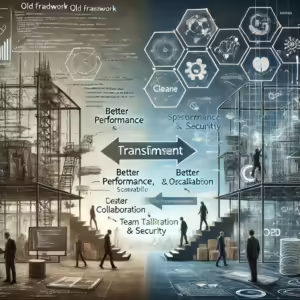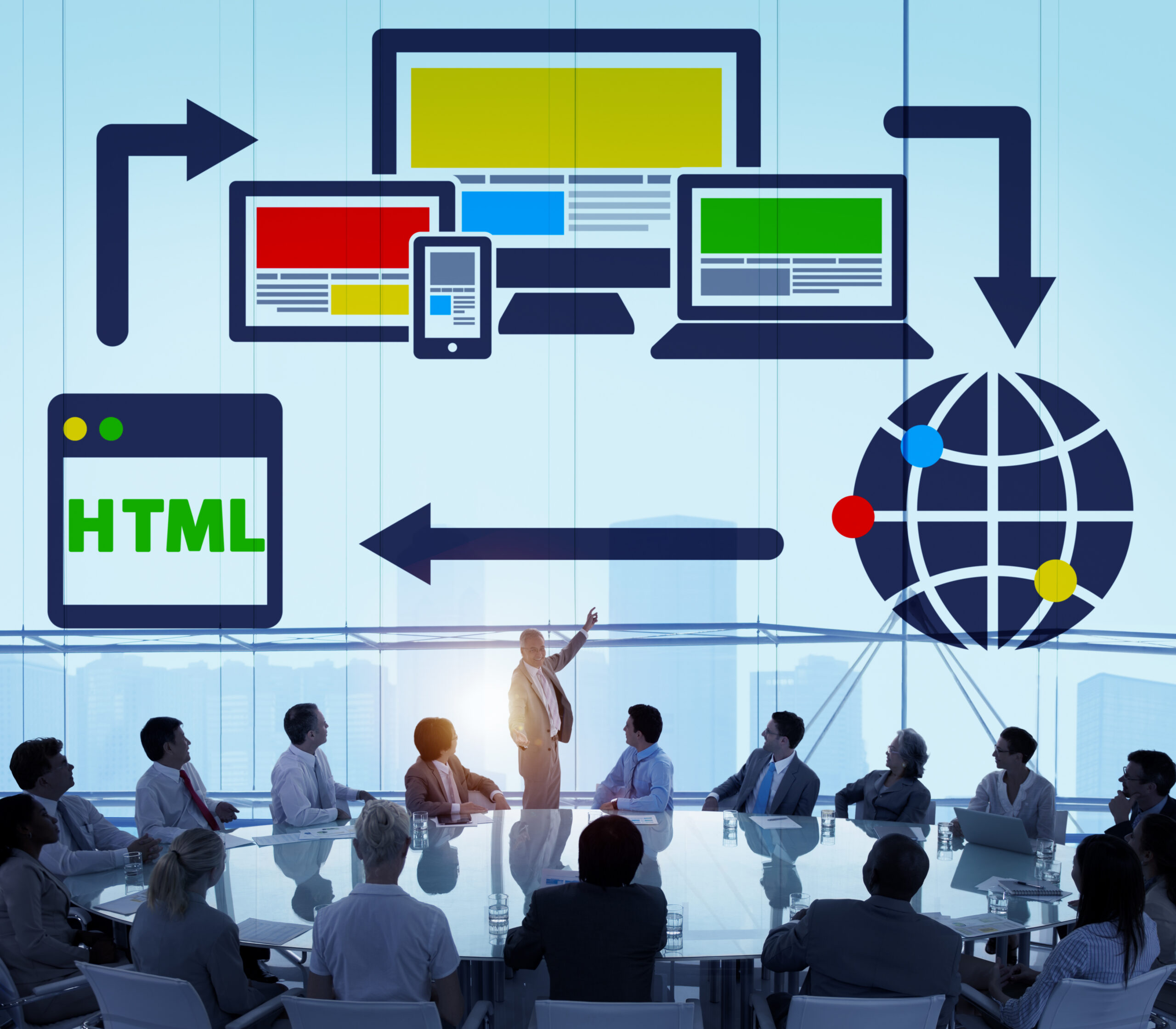In the fast-paced world of technology, businesses are often compelled to update their software applications to remain competitive. Whether driven by the need for improved performance, scalability, or security, moving from an outdated framework to a modern one is a critical step for organizations aiming to future-proof their technology stack. This shift can also enhance user experience and improve the efficiency of the development team by adopting frameworks that are better supported and more aligned with current industry standards.
However, transitioning from old frameworks to new ones is no small feat. It requires careful planning, comprehensive testing, and the right talent to ensure that the migration is seamless and that the app continues to function as expected. In this blog, we will explore the key steps involved in app migration and highlight how Curate Consulting Services can help your business by providing the specialized talent needed to successfully navigate this process.
Why Move from Old Frameworks to New?
The decision to migrate from an old framework is often rooted in a variety of technical and business-driven reasons:
Performance Improvements:
- Older frameworks may not be optimized for today’s more demanding applications, leading to performance bottlenecks that frustrate users and developers alike. Moving to a new framework can unlock better performance and responsiveness.
Scalability:
- As your business grows, so do the demands on your application. New frameworks often come with built-in features to support scaling, whether that involves handling more users, managing larger datasets, or expanding to new markets.
Security and Maintenance:
- Legacy frameworks may no longer receive regular security updates or support from the community. Migrating to a more modern framework ensures your application stays secure against emerging threats while benefiting from ongoing updates.
Developer Productivity:
- Modern frameworks often provide better tools, documentation, and support, which enhances the productivity of your development team. Additionally, a modern stack can attract top developer talent, eager to work with cutting-edge technologies.
At Curate Consulting Services, we help businesses identify when it’s time to make the transition and provide the talent to manage the migration. Our team of experts has extensive experience working with both legacy systems and new frameworks, ensuring that your app migration is carried out with minimal disruption and maximum success.
1. Evaluation and Planning: Laying the Foundation
The first step in any successful migration project is a thorough evaluation of the current application. It’s essential to understand the reasons driving the move and to define the scope of the migration process.
Assessment: Begin by identifying the pain points of your current system. Is the framework outdated and no longer supported? Are you experiencing performance or scalability issues? This assessment helps determine the objectives of the migration and sets the stage for selecting a new framework.
Selecting a New Framework: The choice of the new framework is crucial. You need a technology stack that aligns with your project’s needs—whether that’s React for front-end development, Node.js for server-side performance, or Laravel for full-stack PHP development. When selecting a new framework, consider factors like scalability, community support, and the long-term viability of the technology.
Curate’s consulting services offer a comprehensive evaluation process. We help businesses make informed decisions about the best frameworks for their applications based on business needs, technology trends, and scalability requirements.
2. Defining the Migration Scope: Focus on What Matters Most
Once you’ve selected a new framework, it’s time to define the migration scope. It’s tempting to overhaul everything at once, but a phased approach is often the most effective.
Feature Prioritization: Begin by migrating critical components first. For example, if performance is your primary concern, focus on backend systems that manage data processing and interactions. For front-end applications, prioritize features that impact user experience.
Data Migration: This is a critical aspect of the migration process. Depending on the complexity of your app, you may need to plan for data transformation to ensure compatibility with the new framework. Data consistency and integrity must be maintained throughout the migration.
3. Code Analysis and Refactoring: Cleaning Up the Past
Migrating code from an old framework to a new one presents the perfect opportunity for refactoring.
Codebase Assessment: Start by reviewing your existing codebase. How tightly coupled is your code with the old framework? What dependencies might create roadblocks? Understanding these elements will help guide the refactoring process.
Refactoring for Modularity: New frameworks often encourage a modular approach to development. During migration, refactor your code to make it more modular, easier to maintain, and scalable within the new framework.
Curate can supply developers with deep expertise in refactoring legacy code. Our teams are skilled in identifying inefficiencies and restructuring code to make it adaptable for modern frameworks, ensuring a smooth transition.
4. Incremental Development and Testing: One Step at a Time
A common mistake during migration is attempting to move everything at once. A better approach is to adopt incremental development, porting features one by one and testing rigorously along the way.
Incremental Development: As you begin migrating features, focus on ensuring that each feature works perfectly in the new environment before moving on. This iterative process reduces the risk of introducing new bugs or regressions.
Testing: Testing is crucial at every stage. Implement unit tests, integration tests, and automated testing to catch any issues early. This also helps ensure that the new application is functioning as expected, both from a performance and security standpoint.
5. Data Migration: Keeping It Intact
Migrating your data is often one of the most complex parts of the process.
Data Mapping and Transformation: Older databases may not align perfectly with modern data structures. Carefully map out the data and make necessary transformations so that it fits the new framework’s architecture.
Testing and Validation: After migration, verify data integrity and ensure that no data is lost or corrupted. Develop rollback procedures in case any issues arise during the migration.
6. Integration with Third-Party Services
Many applications rely on third-party APIs or services for added functionality, such as payment processing or user authentication.
Update API Integrations: If your app integrates with third-party services, make sure these integrations are compatible with the new framework. You may need to re-implement some integrations using modern protocols or libraries.
Authentication and Authorization: Modern frameworks often have built-in authentication mechanisms. Migrating user authentication can be tricky, but it is essential to get it right to ensure a secure transition.
7. Optimization and Deployment: Ready for Production
As you near the end of the migration process, it’s time to focus on optimization and deployment.
Performance Optimization: Use profiling tools to benchmark the new app’s performance. Address any bottlenecks by optimizing code, implementing caching strategies, and fine-tuning the architecture.
Staging and Production Rollout: Before full deployment, roll out the new application in a staging environment. Test the entire system, gather feedback from users, and address any final issues. Once satisfied, gradually roll out the application in production.
Curate can provide specialized DevOps talent to assist with deployment, ensuring that your app migration goes live smoothly and that any post-deployment issues are quickly addressed.
8. Documentation and Post-Migration Support
Even after the migration is complete, your team will need proper documentation and ongoing support.
Documentation: Update your documentation to reflect any changes in the application’s architecture, new dependencies, and any new procedures developers need to follow.
Post-Migration Support: Address any bugs that may arise after migration, and continuously monitor performance to ensure that the app meets user expectations.
At Curate, we understand that migration is not a one-time event but an ongoing process. That’s why we offer post-migration support, monitoring, and bug fixes to ensure your app continues to perform optimally long after the migration.
Conclusion: Ensuring a Seamless Migration with Curate Consulting Services
Moving an application from an old framework to a new one is a strategic decision that can bring significant business benefits. However, it requires careful planning, skilled development, and ongoing support to get it right. By partnering with Curate Consulting Services, you’ll have access to specialized talent, including developers, testers, and DevOps experts who can guide you through every step of the migration process.
Whether you’re looking to modernize your legacy systems, improve performance, or future-proof your application, Curate can help you achieve your goals efficiently and effectively. Let us help you navigate the complexities of migration and deliver an application that is built to thrive in today’s fast-paced digital world.



